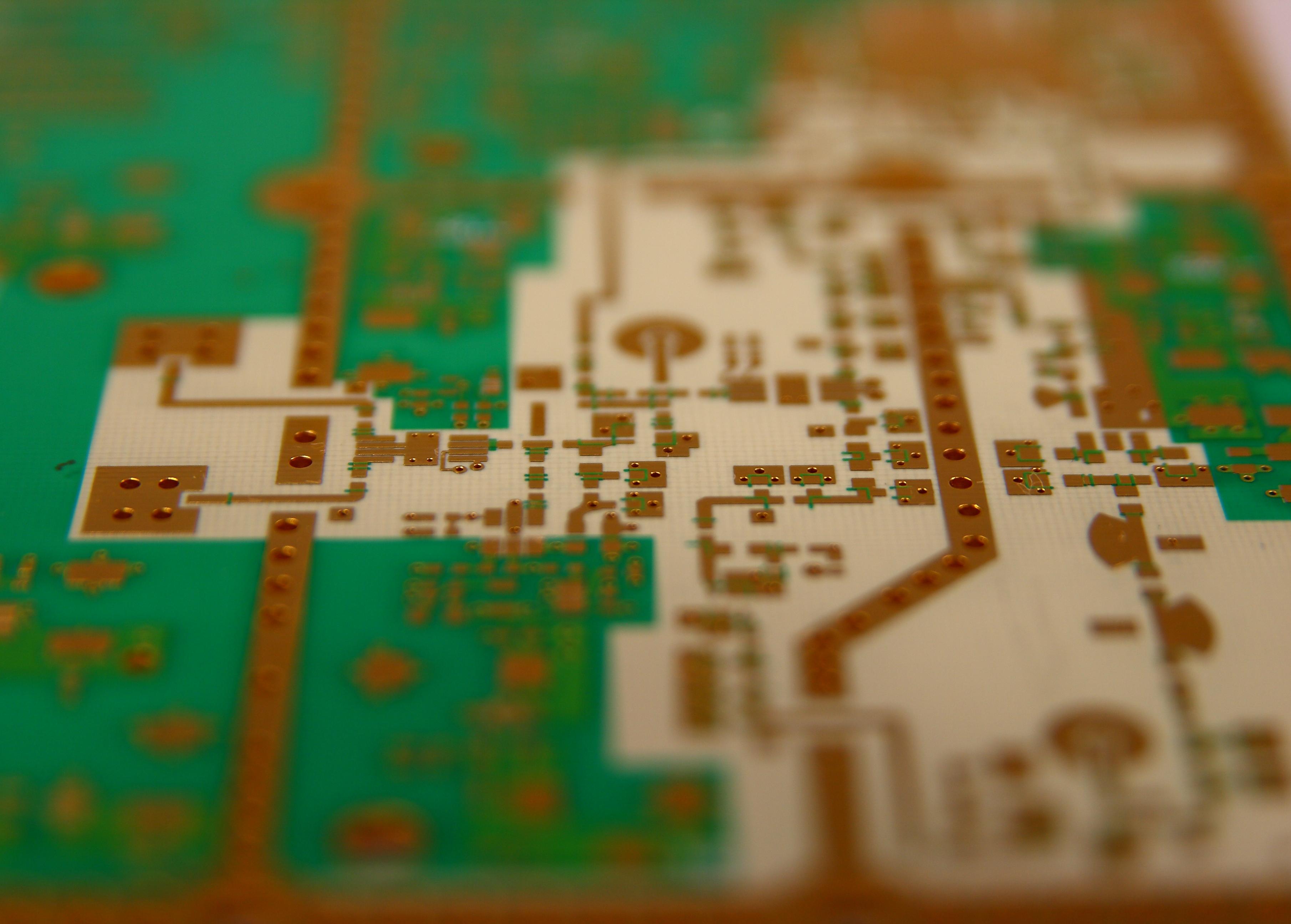Radio frequency (RF) and Microwave
Radio Frequency (RF) and Microwave (MW) PCBs.

What distinguishes radio frequency (RF) printed circuit boards from microwave (MW) ones is the operating frequency: RF circuits in fact operate above 100 MHz whereas MW PCBs operate above 2 GHz.
The fields of application vary greatly, from smartphones to defence radars.
These circuits have a specific degree of construction complexity where, in other words, the admitted tolerances, especially on the impedance, are decidedly more restricted than those admissible on traditional PCBs.
This leads to the need for high precision of incision and narrow tolerances on the thickness of the dielectrics.
Small deviations from the admissible tolerances could generate disturbance both in the reception and transmission of radio signals.
Interference may also be triggered during the transmission of the signal along through holes. In order to minimise this effect, and to obtain low interference transmissions, the unnecessary portion of copper can be removed on the side of the through holes using back-drilling.
Finding a manufacturer with the knowledge and ability to propose and use many different materials, capable of high accuracy and repeatability, is critical to obtaining the proper design support and the ideal result on completion of production of your RF or MW PCB.
Speed and signal integrity are set by design and PCB fabrication.
The experience accrued over the years in manufacturing RF & MW printed circuit boards allows us to adopt the right solutions to help you build a high-performance, reliable and durable PCB.
